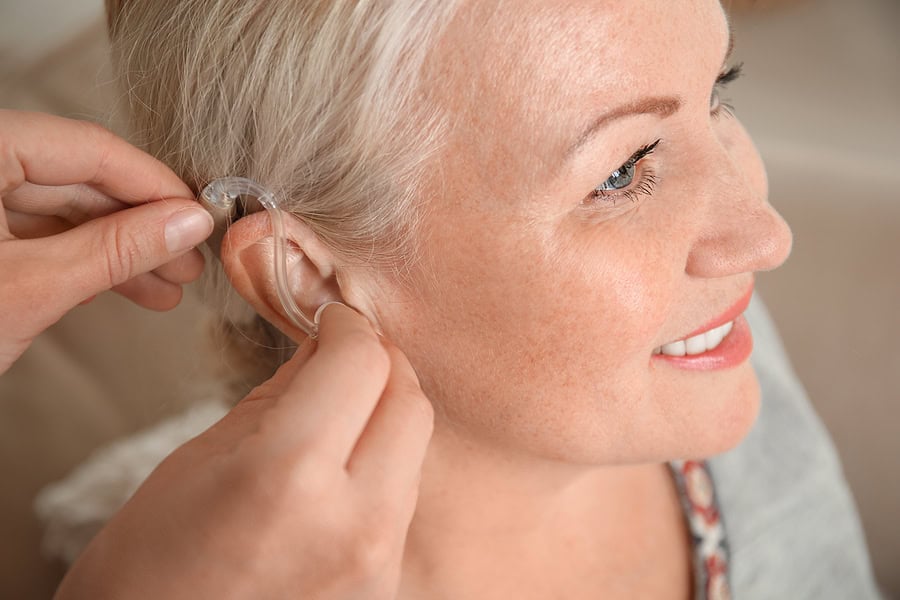A hearing aid fitting is a significant step in addressing hearing loss and improving communication. However, it’s common to experience some challenges as the ears and brain adjust to this new way of hearing. These issues, though frustrating, are typically temporary and manageable. Recognizing these concerns early can ease the adjustment process and ensure a more successful outcome.
Every new hearing aid user encounters unique experiences, but some challenges are more frequent than others. From unexpected sounds to minor discomfort, understanding what’s happening and taking the right steps can make all the difference.
Adjusting to New Sounds
After a hearing aid fitting, everyday sounds might seem unusually loud or sharp. Things like rustling paper or the hum of appliances can feel overwhelming at first. This happens because the brain is relearning how to process sounds it hasn’t noticed in a while.
To manage this, consistent use of hearing aids is important. Gradually increasing the time they are worn daily can help the brain adapt more comfortably. Scheduling a follow-up hearing health exam with hearing health professionals can also ensure the device settings are optimized for specific needs.
Dealing with Feedback Whistling
Hearing aid feedback, often heard as a whistling or squealing sound, is another common issue. It typically occurs when sound escapes from the ear canal and is picked up by the hearing aid microphone. An improper fit, earwax buildup, or a loose device can contribute to this problem.
Ensuring the hearing aid is correctly inserted often solves the issue. Regular cleaning and maintenance of the device, as well as keeping the ear canal clear of excess wax, can also help. If feedback persists, the hearing health professional may need to adjust the settings or refit the device.
Managing Discomfort
Some new users experience physical discomfort when wearing hearing aids for the first time. This can include irritation or pressure around the ear. It’s a natural part of the adjustment process as the skin and cartilage adapt to the device.
Wearing the hearing aids for shorter periods initially and gradually increasing usage can minimize irritation. If discomfort continues, consult the hearing health professional for a fit adjustment, or explore softer ear tips. A well-fitted hearing aid should be snug but not painful.
Difficulty with Speech Clarity
Hearing aids improve overall hearing, but understanding speech in noisy environments can still be challenging for some. Background noise may compete with conversations, making communication more difficult than expected.
Modern hearing aids often include features like directional microphones or noise-reduction settings. Ensuring these are activated can enhance speech clarity. Also, practicing active listening strategies, such as focusing on the speaker’s face or lips, can further improve comprehension.
Problems with Battery Life
Short battery life is another common complaint among hearing aid users. Devices that drain quickly may be due to improper storage, using low-quality batteries, or the demands of advanced features like Bluetooth streaming.
Storing hearing aids in a dry, cool place when not in use and turning them off overnight can extend battery life. Investing in high-quality batteries or rechargeable models can also make maintenance easier. Regularly replacing batteries ensures consistent performance and avoids unexpected interruptions.
Addressing Earwax and Moisture Issues
Earwax and moisture are frequent culprits of hearing aid malfunction. Excess earwax can block sound or damage internal components, while moisture from sweat or humidity can interfere with electronic parts.
Using a hearing aid dehumidifier overnight can protect the device from moisture. Cleaning tools provided by the hearing health professional are effective for removing earwax safely without damaging the hearing aid. Scheduling routine cleanings during a hearing health exam can prevent wax buildup from becoming a recurring issue.
The Importance of Follow-Up Care
A successful hearing aid fitting doesn’t end with the first appointment. Ongoing care and adjustments are important to ensure the device continues to meet changing needs. Follow-up visits allow hearing health professionals to fine-tune settings, address concerns, and provide guidance on proper usage.


